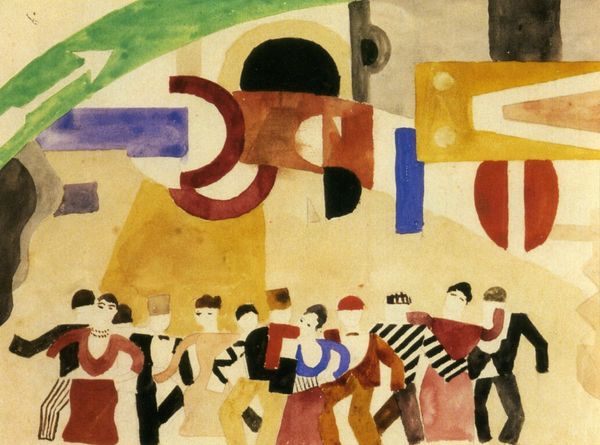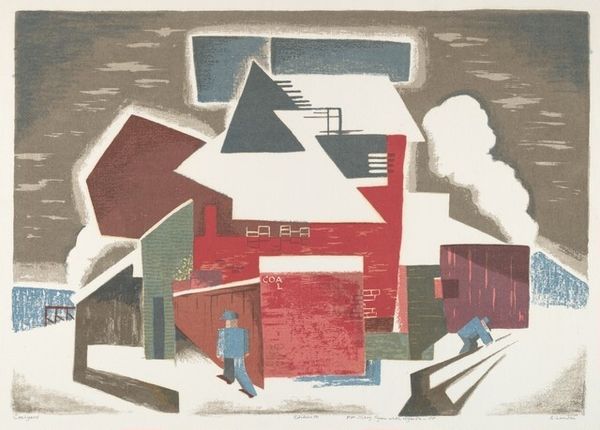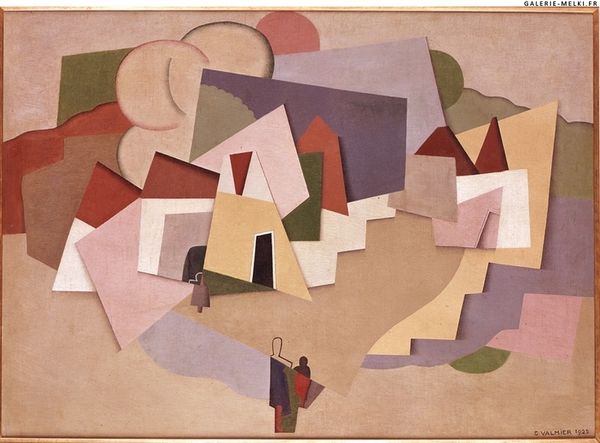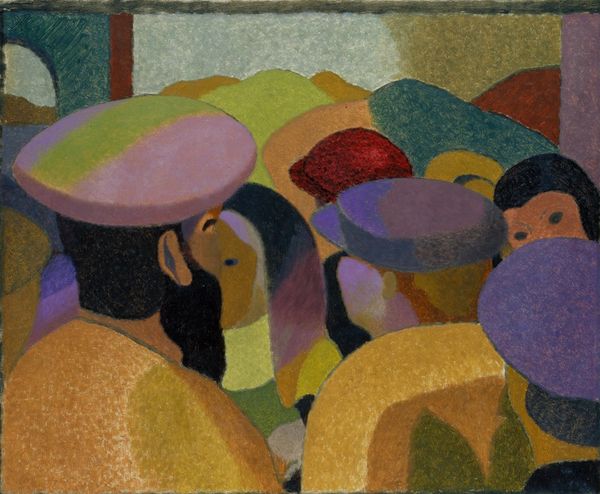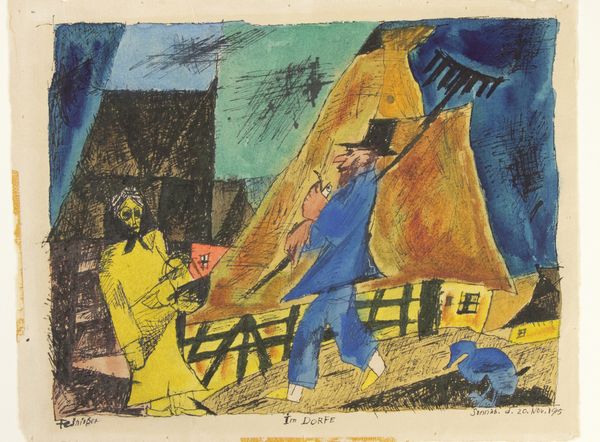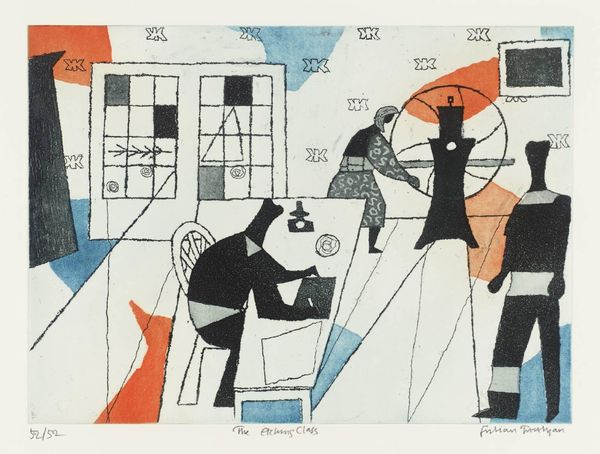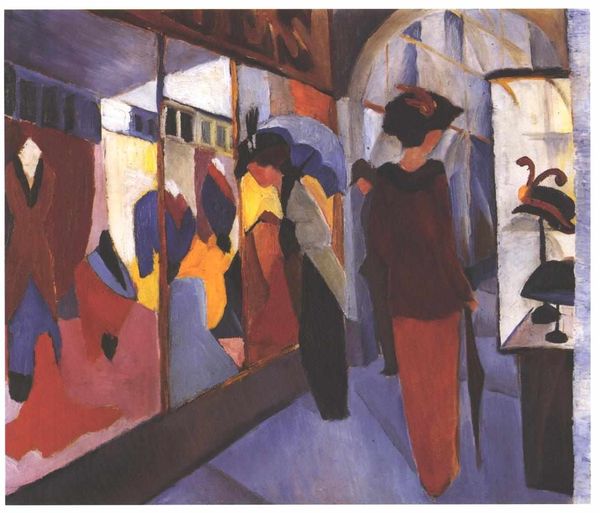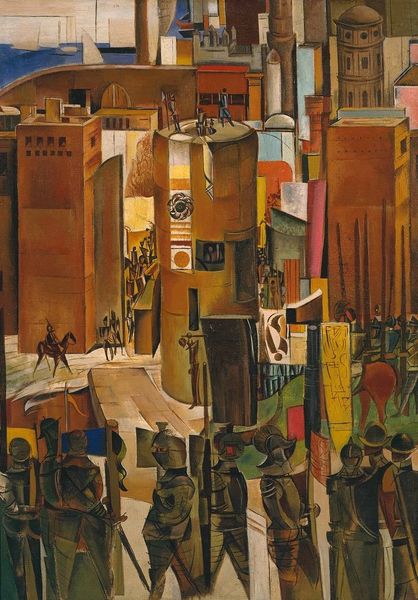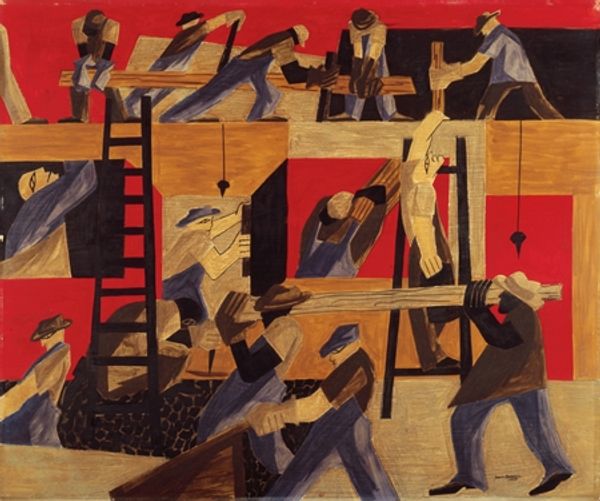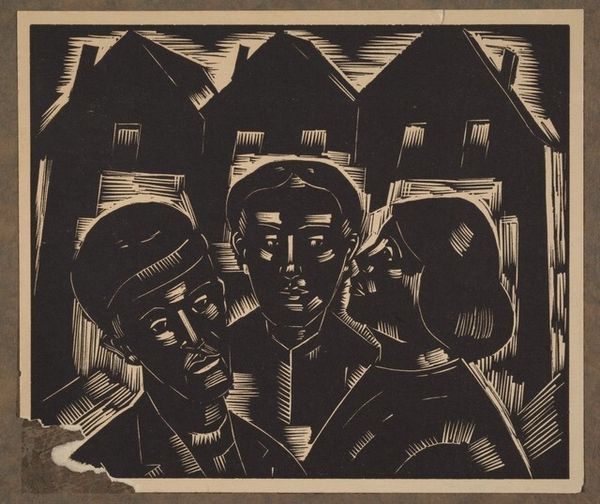
print, watercolor
#
water colours
# print
#
landscape
#
figuration
#
street-photography
#
watercolor
#
geometric
#
modernism
#
watercolor
Dimensions: height 490 mm, width 580 mm
Copyright: Rijks Museum: Open Domain
Editor: Here we have Hendrik Nicolaas Werkman’s "Straatbeeld met figuren", created in 1944 using watercolor. There's a somewhat ominous feel, perhaps due to the faceless figures and muted palette. What can you tell us about this street scene? Curator: It's certainly a compelling image. Werkman produced this during the Nazi occupation of the Netherlands. Knowing that, we can interpret the faceless figures not just as a stylistic choice, but as a representation of the anonymity and fear that pervaded daily life under occupation. Do you notice how the buildings seem to almost loom over the figures? Editor: I do. It’s like the buildings are pressing down on them, very angular and imposing. Curator: Exactly. This reflects a social and political reality. The street, usually a public space for interaction and commerce, becomes a site of potential surveillance and oppression. The use of geometric forms simplifies and abstracts the environment, amplifying this sense of unease. Also, consider where this print may have been seen. How might its audience have perceived its visual statements at that specific moment? Editor: That's a chilling perspective. I hadn't considered the political implications so directly. I was caught up in the visual, but the context really deepens the meaning. The print becomes a subtle act of resistance, a quiet commentary on a society under duress. Curator: Precisely. Art often reflects the power structures and social tensions of its time. The politics of imagery become incredibly potent in situations of conflict and control. Considering those politics, what could the choice of color express about the imagery in the work? Editor: Seeing it that way has really shifted my perspective. It’s a powerful example of how art can operate as both a reflection and a critique of its social context. Curator: And hopefully highlights how understanding that context enriches our appreciation and interpretation.
Comments
No comments
Be the first to comment and join the conversation on the ultimate creative platform.

